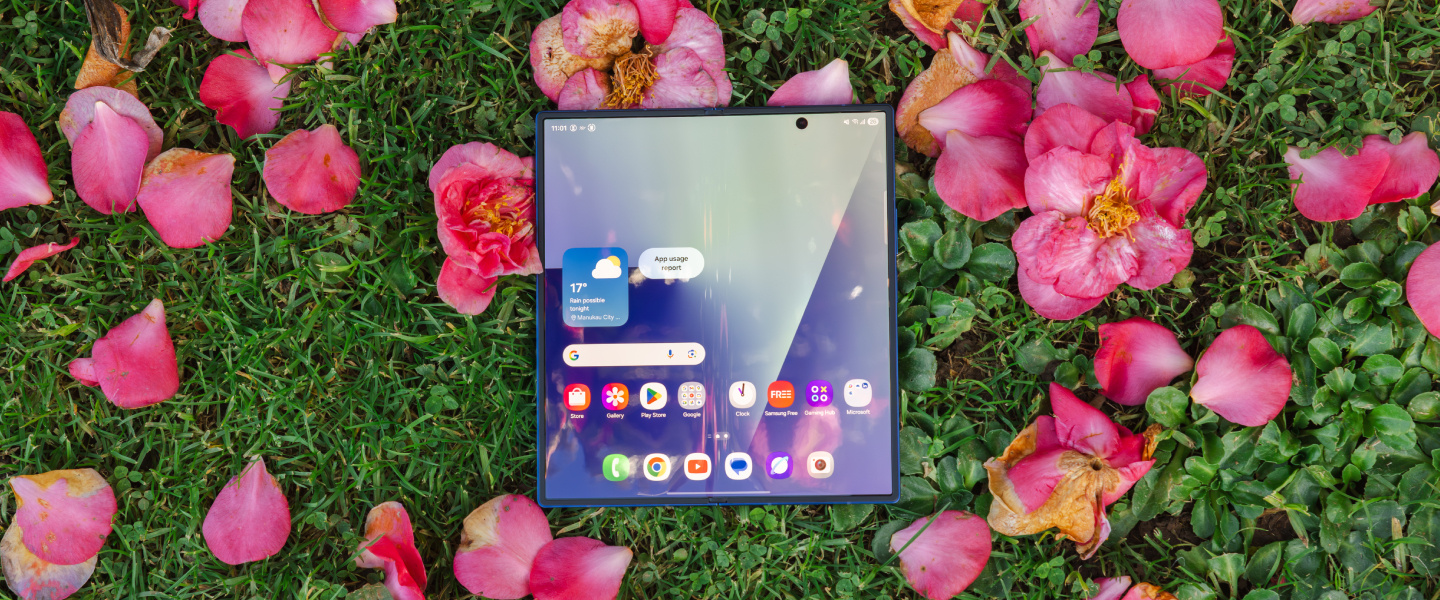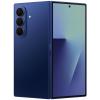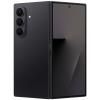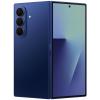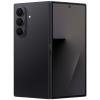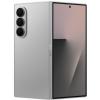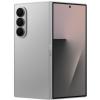Samsung’s foldable journey has been one of bold experimentation and steady refinement. It’s pretty cool to think that the latest version of their foldable flagship is the 7th generation. I know for me it feels like just yesterday we were marvelling at the very first foldable phones on the market. From the early days of the Galaxy Z Fold Series, where we all wondered how durable and/or noticeable that hinge would be, to the polished and powerful Galaxy Z Fold6, each iteration has brought the concept closer and closer to the mainstream. Now, with the Galaxy Z Fold7, it’s safe to say foldable phones are well and truly part of the smartphone commonplace. This isn’t just a niche gadget or a tech flex - it’s a phone you can genuinely consider. The decision to go foldable doesn’t feel radical anymore; it’s simply another premium option, like choosing between a Regular or Ultra model.
The Galaxy Z Fold7 isn’t about reinventing the wheel. It’s about smoothing the ride. While the Z Fold6 was already a powerhouse, the Z Fold7 takes that foundation and builds on it with smarter design choices, deeper AI integration, and meaningful performance upgrades.
| Fold7 | Fold6 |
|---|---|
|
215g |
239g |
|
8.9mm when folded |
12.1mm when folded |
|
6.5-inch/8-inch display |
6.3-inch/7.6-inch display |
|
21:9 cover screen |
22.1:9 cover screen |
|
200MP+12MP+10MP (main camera) 10MP (front camera) 10MP (cover camera) |
50MP+12MP+10MP (main camera) 4MP (front camera) 10MP (cover camera) |
|
Snapdragon 8 Elite |
Snapdragon 8 Gen 3 |
|
IP 48 |
IP 48 |
|
4,400 mAh battery |
4,400 mAh battery |
|
12GB/256GB 12GB/512GB 16GB/1TB |
12GB/256GB 12GB/512GB 12GB/1TB |
Design
Samsung’s foldable evolution has always been about refining the form factor, and with the Galaxy Z Fold7, that mission continues with noticeable polish. Compared to the Z Fold6, the Z Fold7 is thinner and lighter.
When folded, the Z Fold7 measures 158.4 x 72.8 x 8.9 mm, while the Z Fold6 comes in at 153.5 x 68.1 x 12.1 mm. That’s a significant reduction in thickness, especially when you consider that the Z Fold7 is now just 4.2 mm thick when unfolded, compared to the Z Fold6’s 5.6 mm. In fact, when folded, it’s almost as thin as the Galaxy S25 Ultra, and when opened, it’s only a little thicker than its USB-C port.
Weight has also dropped from 239g on the Z Fold6 to 215g on the Z Fold7, which is a big deal for a phone this size. It’s not just easier to hold - it’s more comfortable to use for extended periods, whether you’re reading, watching content, or multitasking.
Visually, the Z Fold7 retains Samsung’s signature premium materials: Gorilla Glass Victus 2 on the back and a sturdy aluminium frame. But the hinge has been improved slightly to reduce the crease visibility and improve durability. It’s still IP48-rated for water and dust resistance, so you’re getting high-level protection and even flagship-level water resistance.
In short, the Z Fold7 doesn’t just look better - it feels better, and is more practical for everyday use.
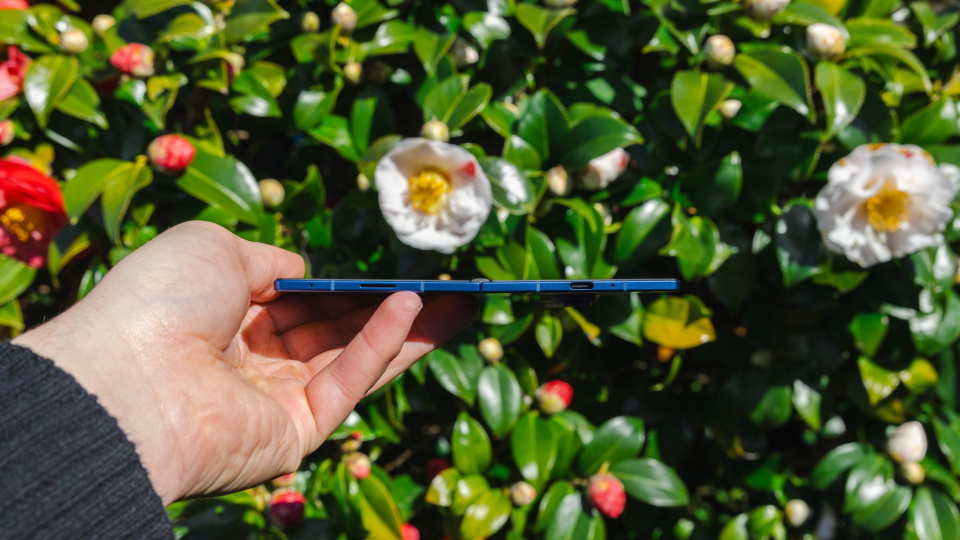
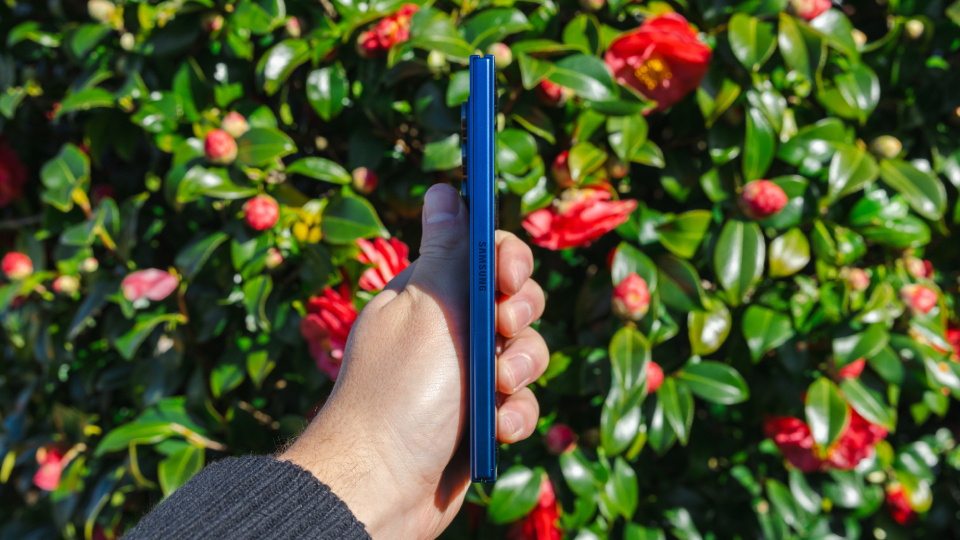
Display
Samsung’s foldable displays have always been the centrepiece of the Galaxy Z Fold series, and with the Z Fold7, the company has taken things to another level. The new proportions are being talked about widely, and it’s not difficult to see why. But that’s not all that has been improved with the Z Fold7.
Main Display
For starters, it features an 8.0-inch Dynamic AMOLED 2X internal display with a resolution of 2184 x 1968 pixels. This is slightly larger and sharper than the Z Fold6’s 7.6-inch panel at 2160 x 1856 pixels. While the difference in size may seem incremental, it translates to a noticeably more immersive experience when open, especially when multitasking or watching content in full screen. The display definitely feels a little closer to a full-sized tablet with the larger display.
Both displays support HDR, 120Hz refresh rate, and reach a peak brightness of 2600 nits, which is excellent for outdoor visibility. Even with the larger screen real estate, the Z Fold7 still delivers crisp visuals with vibrant colours and deep blacks.
Samsung has also worked on reducing the crease visibility, something that’s always a talking point with foldables. When you’re looking at the phone front-on, you will barely notice the crease, and when you’re staring at it from the side, the Z FoldZ7’s crease is less pronounced than ever. This is thanks to refinements in hinge engineering and display layering. It’s the kind of improvement that we expect to see with new generations and definitely enhances the day-to-day experience.
Cover Display
The outer display has seen a meaningful upgrade too. The Z Fold7 sports a 6.5-inch cover screen with a resolution of 2520 x 1080 pixels, compared to the Z Fold6’s 6.3-inch panel at 2376 x 968 pixels. The aspect ratio has shifted to a more conventional 21:9, making it feel more like a regular smartphone when folded. In fact, when folded, it now feels entirely like a standard smartphone. That’s a meaningful shift – unfolding the device is no longer a necessity for everyday tasks, as it sometimes was with the Z Fold6’s narrower cover screen. Whether you're replying to messages, browsing, or even multitasking, the Z Fold7’s outer display handles it all with ease. And when you do choose to unfold it, you’re rewarded with a stunning 8-inch canvas that elevates everything from media consumption to productivity. The updated aspect ratio also improves one-handed use, typing comfort, and app compatibility, making the Z Fold7 more versatile than ever when folded.
Performance
Samsung’s Galaxy Z Fold7 doesn’t just look sleeker, it’s also packing serious muscle under the hood. With a new chipset and expanded RAM options, this generation is all about efficiency, speed, and sustained performance.
At the heart of the Z Fold7 is the Snapdragon 8 Elite for Galaxy. This is a notable upgrade from the Z Fold6’s Snapdragon 8 Gen 3 for Galaxy.
The new setup delivers faster peak performance and better thermal efficiency, especially during sustained workloads like multitasking, gaming, and more.
In real-world use, the Z Fold7 feels snappier when switching between apps, running split-screen tasks, or using AI features.
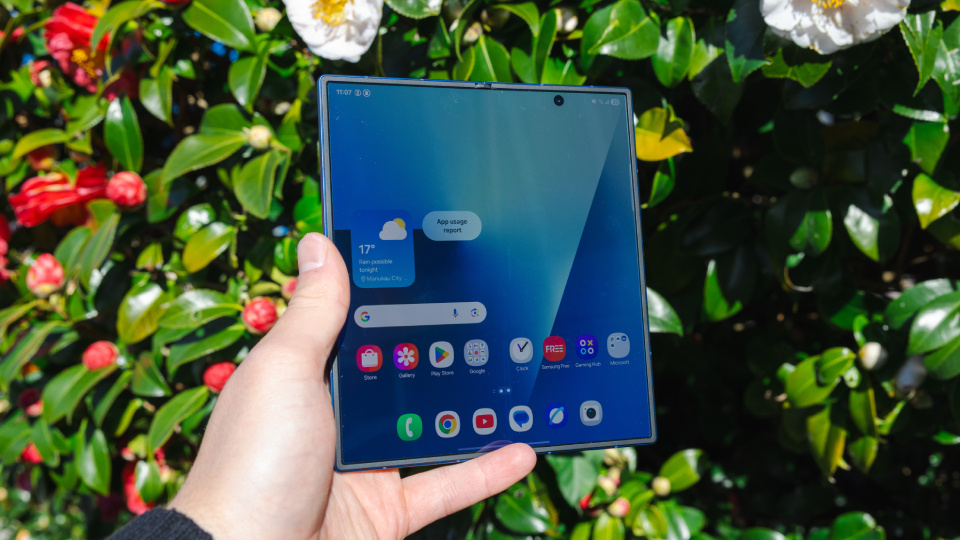

Memory & Storage
Samsung has expanded the RAM and storage configurations for the Z Fold7:
12GB RAM + 256GB / 512GB
16GB RAM + 1TB (not available on the Fold6)
The Z Fold6 maxed out at 12GB RAM, so the jump to 16GB is a big win for power users. Whether you’re juggling multiple apps, editing high-res content, or running DeX mode, the Z Fold7 handles it all with ease. DeX mode is particularly interesting because with 16GB RAM, using the new Z Fold7 as a mini laptop is even more enticing.
The Z Fold 7 also retains the 4,400 mAh dual-cell battery from the Z Fold6, along with:
- 25W wired charging
- 15W wireless charging
- Reverse wireless charging
While the numbers haven’t changed, the Snapdragon 8 Elite’s efficiency means you’ll likely see better battery life in day-to-day use.
Camera Capabilities
Samsung’s foldables have always been more about productivity and innovation than photography, but the Galaxy Z Fold7 seeks to change that narrative. With a major upgrade to its main sensor and refinements across the board, the Galaxy Z Fold7 finally feels like a phone that can compete with the best camera flagships.
Main Camera
The Galaxy Z Fold7’s headline upgrade is its 200MP main sensor, a massive leap from the Galaxy Z Fold6’s 50MP. This is the same sensor found in the Galaxy S25 Ultra, and it brings a noticeable boost in detail, range, and low-light performance.
In side-by-side comparisons, the Galaxy Z Fold7 delivers sharper textures, more accurate colours, and better contrast than the Z Fold6. The overall image quality feels more flagship-grade.
Ultra-Wide & Telephoto
The Z Fold7 has retained the same secondary sensors:
12MP ultra-wide
10MP telephoto with 3x optical zoom
While these haven’t changed, the Z Fold7 does benefit from improved image processing. In particular, Zoom shots are definitely sharper.
Selfie Cameras
The Z Fold7 also brings back the dual selfie setup:
10MP cover camera (same as the Z Fold6)
Front (unfolded) internal camera, now upgraded to 10MP from the Z Fold6’s 4MP
Video Capabilities
Both devices support:
- 4K @ 60fps/UHD 8K @ 30fps
- 1080p @ up to 240fps
Overall, the Galaxy Z Fold7’s camera system is no longer just good enough; it’s genuinely impressive. The 200MP main sensor brings it in line with Samsung’s Ultra series, and the refinements to processing, stabilisation, and under-display tech make it a foldable that doesn’t compromise in the camera department.

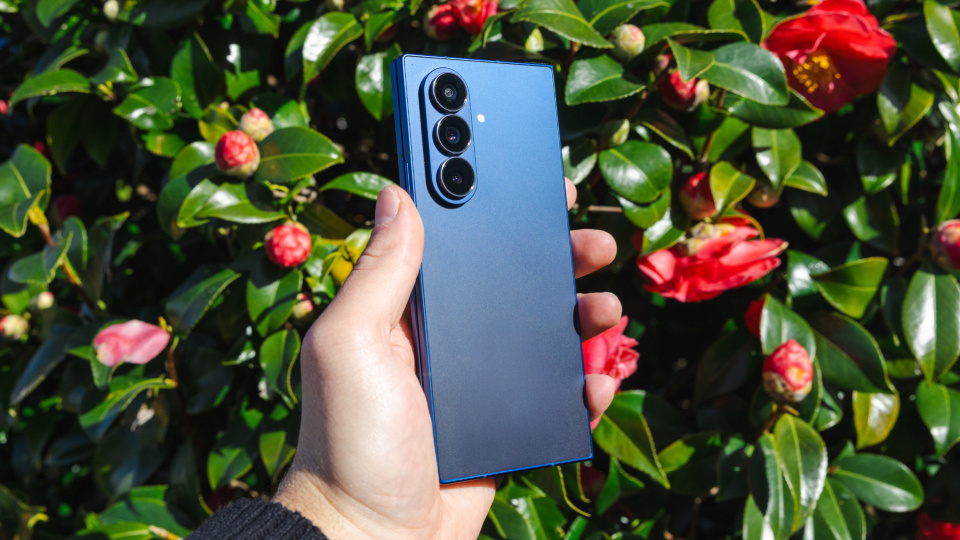
Software and AI
Samsung’s software experience has always been a key part of what makes its foldables stand out, and with the Galaxy Z Fold7, the company is doubling down on AI-powered features, multitasking enhancements, and a more refined One UI experience.
Operating System & UI
The Z Fold7 ships with Android 16 and One UI 8 out of the box, while the Z Fold6 launched with Android 15 / One UI 7. It’s tricky to call a software update an upgrade because well, the new software would be available on the Z Fold6 too. But either way, the new OS brings smoother animations, better resource management, and a more cohesive interface across both the cover and internal displays.
AI Features
Samsung’s integration of Galaxy AI in the Z Fold7 is also a leap forward. While the Z Fold6 introduced some AI features as well, the Z Fold7 introduces a suite of on-device AI tools that enhance productivity and creativity. The world is moving forward with AI pretty rapidly, so having a unique phone like this is certainly a great way to experience it.
Key AI features like Live Translate, Note Assist and Generative Edit are designed to work offline, ensuring privacy and speed. They’re also optimised for the Galaxy Z Fold7’s multitasking environment, allowing users to run AI tools side-by-side with other apps.
Multitasking & Productivity
Speaking of, the Galaxy Z Fold7 continues to be a multitasking beast. After all, that is its main appeal. With support for up to three active windows and floating pop-ups, users can browse, chat, and edit simultaneously. The Snapdragon 8 Elite’s improved efficiency means less lag and better responsiveness, even with demanding workflows.
Samsung DeX is another way to maximise productivity, allowing the Z Fold7 to transform into a desktop-like experience when connected to a monitor or TV. Combined with the new AI tools, it’s a very handy option for professionals, students, and more.
The Galaxy Z Fold7 isn’t just more powerful - it’s more intelligent. The combination of Android 16, One UI 8, and Galaxy AI makes it feel like a device that’s actively working with you, not just for you. Regardless of what you’re using it for, the Galaxy Z Fold7 adapts to your needs in real time.
The Verdict on Samsung’s Latest Foldable
The Galaxy Z Fold7 isn’t a revolution - it’s a refinement. It takes everything that made the Fold 6 great and makes it better. From design and display to performance and AI, every aspect has been polished to deliver a more cohesive and capable experience.
Once again, foldables just don’t seem like a decision you have to go out of your way for anymore, and the Galaxy Z Fold7 is a great example of that. It’s truly another flagship phone, and it’s a great one at that.
If you’re a fan of expansive displays and optimal productivity, Samsung’s foldable future looks bright. Especially with the Galaxy Z Fold7 at the helm.
This article was created in a paid partnership with Samsung New Zealand.

